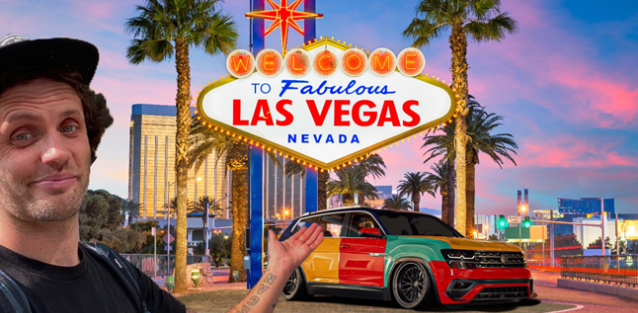The need for little fun brings a special VW Atlas Harlequin tribute to centre stage.
The project vehicle by world traveler, professional car builder, driver, influencer, and self-proclaimed VW Nerd Jamie Orr is being featured by Hengst at its AAPEX booth in Las Vegas this year.
This VW Atlas is a one-of-a-kind created to celebrate the 25th anniversary of the VW Golf Harlequin.
(The VW Atlas pictured was built by BradBuilds, similar to the example Hengst is working on with Jamie Orr.)
“It’s fair to say that the VW Golf Harlequin has a cult following since these cars were made in such a limited quantity,” say the good folks at Hengst. “This is what makes us so excited to work with Jamie to bring this rare car back! We cannot wait to unveil this unique, one-of-a-kind VW Atlas Harlequin at this year’s AAPEX Show.”
Hengst is at AAPEX booth #34027
The history of the Harlequin series of VWs is long and winding.
According to VW, the idea for the Harlequin drew inspiration from a 1964 Volkswagen Beetle ad that depicted a multi-coloured Beetle, touting its easily interchangeable parts over many model years. To demonstrate the colors available for the European launch of the Volkswagen Polo city car in 1995–the Golf’s smaller cousin which never made it to North America–Volkswagen created a model with multiple paint colors for an auto-show display, dubbed “Harlekin.”
Originally slotted for a small production run, the colourful hatch created enough demand on its own that around 3,100 units were ultimately built. Due to the buzz it generated in Europe, Volkswagen decided to manufacture a limited batch of Harlequin-inspired Golf vehicles for the North American market in 1996.
The Golf featured one single base colour with four swapped multi-color body panels that always appeared in a specific order – a car with a certain base color always had a certain-colored front passenger door and hood. The series had four base colours: Pistachio Green, Ginster Yellow, Tornado Red and Chagall Blue. The green and blue shades were never available as a single-colour Golf paint options in North America.
While popular, the Harlequin production process was highly labour intensive. The doors, hatches, hoods and fenders had to be bolted in manually from other Golf models. Fans could identify the car’s original colour by looking at one of three elements – the roof, C-pillar and rocker panel – which were formed of a single welded piece and thus impossible to switch out. The grey, speckled, “Joker” interior, which featured the car’s four body colours, was also exclusive to the car.
Demand from dealerships was small but intense, and Volkswagen decided to produce an additional run of Golf Harlequin vehicles, bringing the grand total to about 264 of which about 100 survive to this day.
Visit Hengst


0 Comments